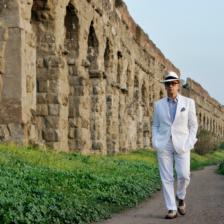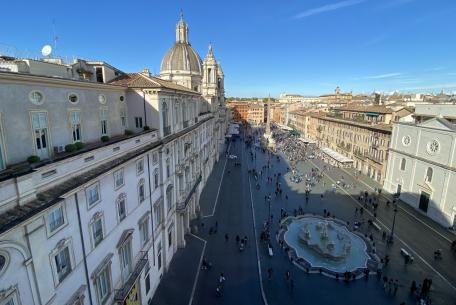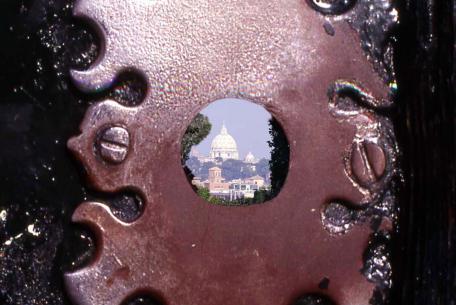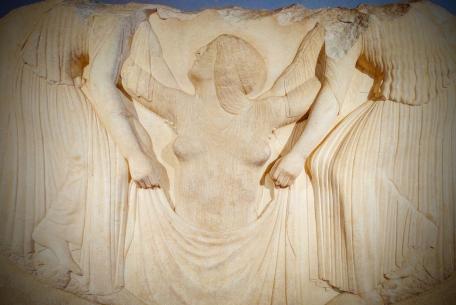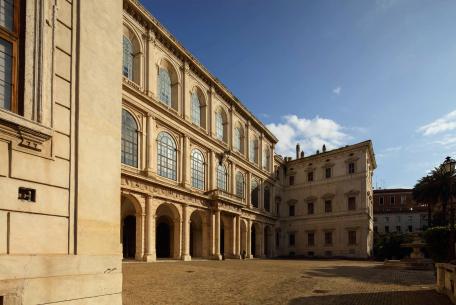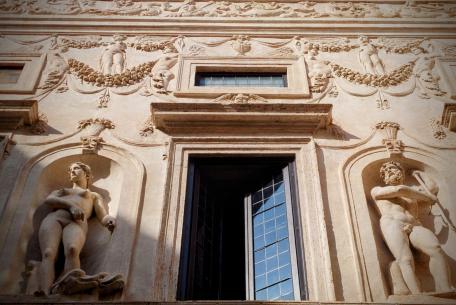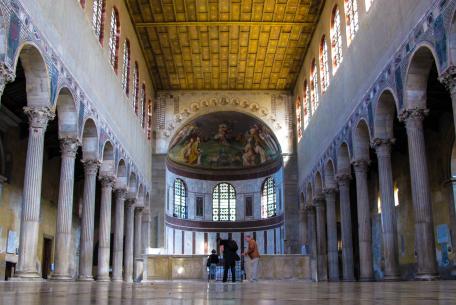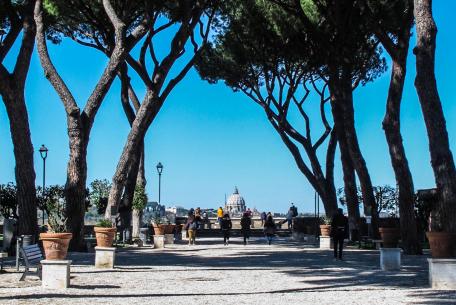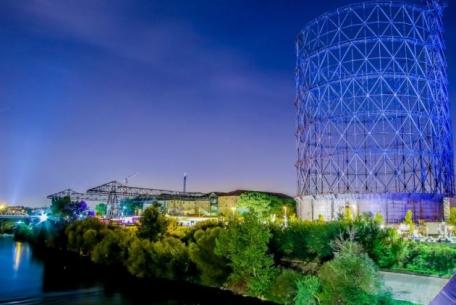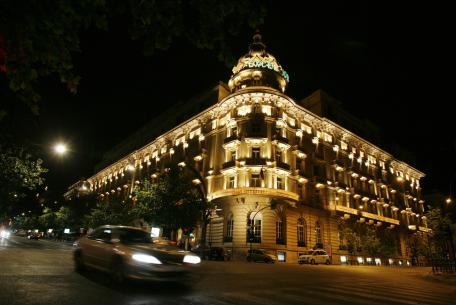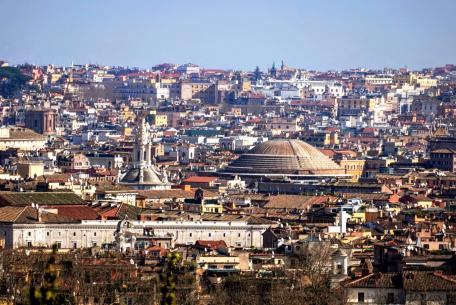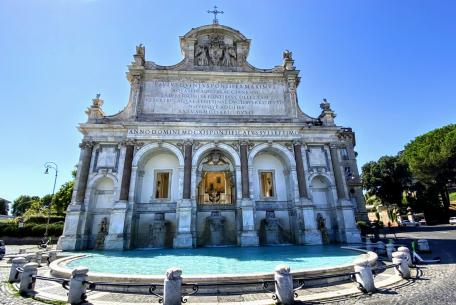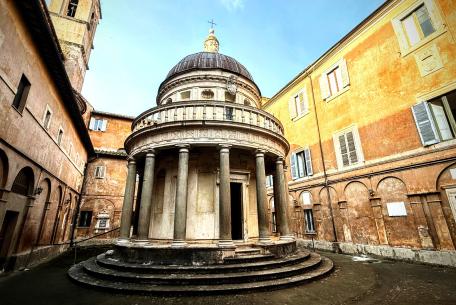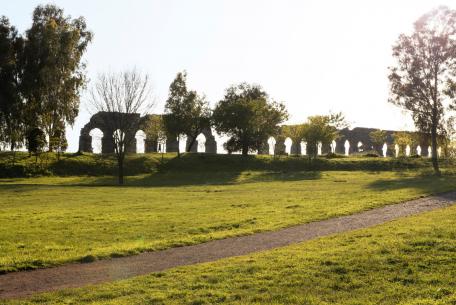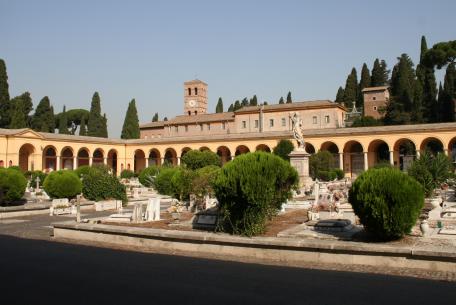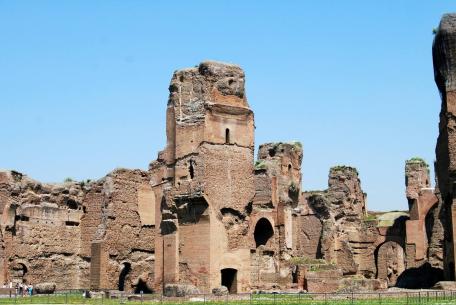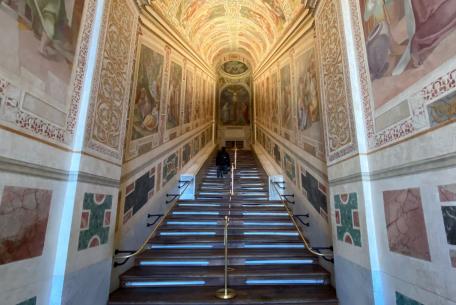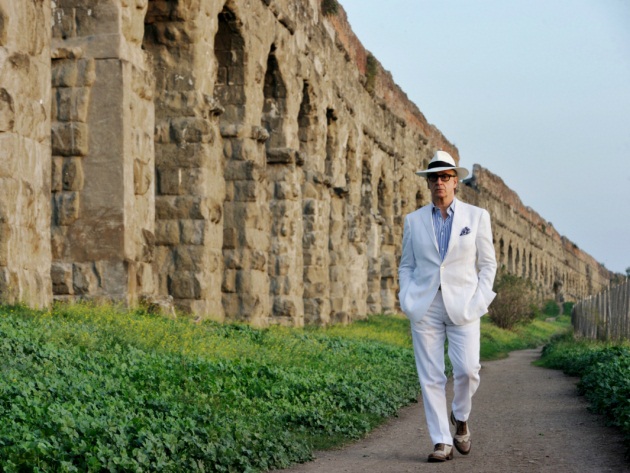
“The Great Beauty” shows us more of Rome than we find in the postcard versions. It explores the hidden corners, behind doorways and gates that never seem to open. But even these places, apparently beyond our reach, can be visited! This guide tells you how you can experience Rome the way you might on a film set.
Let’s start out from Jep Gambardella’s place. Gambardella is the main character. Sorrentino chose as his home a penthouse in a palazzo facing Piazza del Colosseo at no. 9. It faces the southern side of the Flavian Amphitheatre, the most famous monument in the world.
Parties are held at Gambardella’s home, and the train dances “go nowhere”. The gossip Jep and his friends engage in is tinged with cruelty and boredom. Orietta is a good-looker but she’s also afflicted by boredom. She and Jep share a night of love. She lives in an apartment in Piazza Navona, under one of the belltowers of the Church of Sant’Agnese in Agone, adjoining Palazzo Pamphilj.
A friend, Viola, wealthy (but depressed) lives with her mentally ill son in Palazzo Sacchetti, in via Giulia, where she organises a luncheon party which no one attends. Nearby, we find the home of the Princes Colonna di Reggio. They are ‘rent-a-nobles’ who have set up their family museum in Palazzo Taverna. Sorrentino plays games with the identities of the places. They merge into each other, depending on storyline development exigencies.
The “palaces of the princesses” which Stefano opens for Jep and Ramona are actually museums with some of the most fascinating of Rome’s many treasures. The sights include the gate at Santa Maria del Priorato on the Aventine Hill, with the most famous keyhole in Rome, the sculptures of the Capitoline Museums, the courtyard of Palazzo Altemps, the monumental stairway in Palazzo Braschi, Raphael’s Fornarina, or Portrait of a Young Lady, in Palazzo Barberini, the false perspective by Borromini in Palazzo Spada, and the Niobids at the heart of Villa Medici, where a night-time exploration ends.
Rome is marvellous above all when no one is around. Gambardella captures Rome’s spirit during his dawn walks, when returning from some high-society party. The first walk takes him to the Aventine Hill, and to his encounter with the novices at the portico of Santa Sabina. Jep sees a nun picking oranges in the Orange Garden.
A few days later we find Jep in a pensive mood on the Embankments of the Tiber, which he reached after visiting a deserted Via Veneto (from the traces of the Dolce Vita have all but disappeared). This is where his birthday party was held, on the balcony of a 1930s building in via Bissolati, at no. 5. The crazed dancing of dancers whose faces are deformed by botulinus, and who flock to Palazzo Brancaccio to be injected with a miraculous beauty cure.
On the opposite side of the city, Sorrentino provides us with an offbeat portrait of the Janiculum or Gianicolo: at the very start of the film, a cannon goes off, on the terrace with the equestrian statue of Garibaldi, surrounded by the busts of the heroes of the Roman Republic. Nearby is the large fountain or Fontanone, surmounting the complex of San Pietro in Montorio, with the Tempietto by Bramante.
Rome remains impressively monumental even when the scenes are located away from the old city centre: the contemporary art performance in the Park of Aqueducts, and, at the Campo Verano cemetery, the funeral of the only love of Jep’s life. Sorrentino often surprises us, as when he chose to include a fashion shop in the atrium of the fountains hall, or Salone delle Fontane at the EUR. This is the setting for the funeral oration.
“The Great Beauty” is a film where dreams and reality meet, as reflected in the photographic exhibition under the loggia of Villa Giulia or in the trick of the disappearing giraffe, at the Baths of Caracalla − at the very heart of archaeological Rome.
Other locations: Angelicum, Pino Casagrande’s residence, Palazzo dei Penitenzieri, Scala Santa.
Costantino D’Orazio
Art historian and author of the book, “La Roma Segreta del film La Grande Bellezza”
(include biography)
 Condividi
Condividi












































